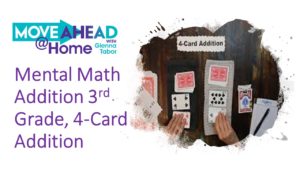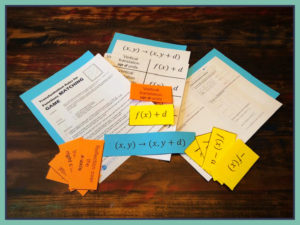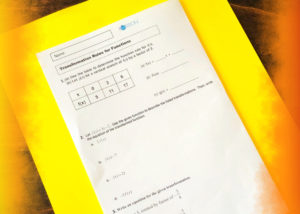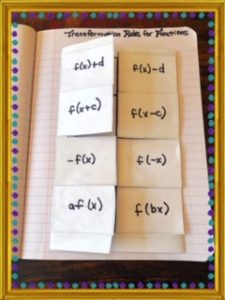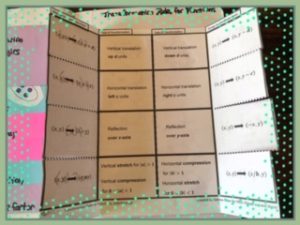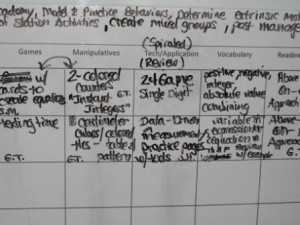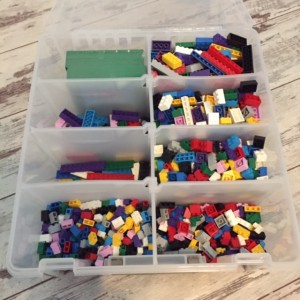|
|
||||||
|
Math Games to Play at Home with a Deck of Cards
Want a few math games to play at home with a deck of cards? Using a deck of cards and a ten frame, your learner will be developing NUMBER SENSE FOR FIRST GRADE by playing TEN IS MY BEST FRIEND! Play this number sense game with your kindergarten or 1st grader and they will understand the number ten for the rest of their lives! WOW!
Older learners will also benefit from this hands-on number sense game as they practice the number bonds that make ten until they know them with automaticity—or without even having to think about it.
MENTAL MATH ADDITION 3RD GRADE- 4-CARD ADDITION is another one of the math games to play at home with a deck of cards. This game is a simple, challenging, and FUN way to master the basic facts and beyond! Add the face cards and the 4-CARD ADDITION game will challenge your 4th, 5th, and 6th graders, too!
That’s right! All the learners in your house, including adults, can practice mental math addition by turning over four cards and trying to be the first one to yell out the correct sum.
Subscribe to my YouTube channel and you’ll know every time a new video is added!
To download the white pages for NUMBER SENSE FOR FIRST GRADE: TEN IS MY BEST FRIEND, MENTAL MATH ADDITION 3RD GRADE- 4-CARD ADDITION & other Move Ahead @ Home games, follow the link to join the Tabor Team.
Membership is FREE, will give you access to over 100 FREE game downloads at ALL levels. PLUS, I’ll send you a NEW FREE MATH GAME every month!
Hands On Math Games with LEGO® Bricks
Want to have fun learning math concepts? You can’t miss with these hands on math games using LEGO® Bricks! While playing this fraction race, players will be using bricks to experience a denominator and a numerator. Those same bricks will help your learner explore fractional parts and equivalent fractions. Your learner will develop an understanding of fractions that will stay with them forever because they used something they could move around!
3rd – 5th graders will benefit from this hands-on fractions game, but since you’re using LEGO® bricks, it will be great for your younger learners, too! Get ready to master the understanding of fractions with a bag of LEGO® bricks, a few cards, and a lot of laughter!
LEGO® BRICKS ADD UP is the perfect game for math at home for kindergarten and preschoolers! This video will help your first and second grade learner practice adding while building with LEGO® bricks. Whether you home school or you’re building on what is learned at school, this game is perfect! LEGO® BRICKS ADD UP is an easy and fun way for all the learners in your house to practice their basic addition facts.
Kindergarten to second grade will benefit from this math at home game, but since you’re using LEGO® bricks., it will be great for your preschool age child, too! With a risk factor added this math game is a LOT of fun for adults, too!
Subscribe to my channel and you’ll always know when a new video is added!
To download the white pages for HANDS ON FRACTIONS AT HOME WITH LEGO® Bricks & other Move Ahead @ Home games, follow the link to join the Tabor Team. It’s FREE & will also give you access to over 100 FREE game downloads at ALL levels.
Transformation Rules FREE Game & Foldable
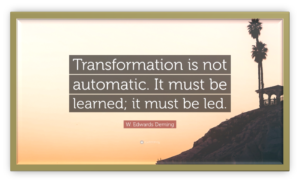

The ability to transform functions is not always automatic. It must be learned. As a bonus, if you learn the transformation rules for functions, then you can use them like a pro AND an artist.
Your unit on transformations of linear functions will become easier for your students, if you use the Rules for Transformation of Linear Functions Game. This game has students matching the function notation with the type of transformation and the change to coordinate point.
To help determine your students level of mastery of the concepts explored in the game, use the passport of state-formatted questions.
I recommend using game clickers to all triad matching games. Players use clickers to indicate a “STEAL” of a pair of cards. Laughter releases the best chemicals and will help your students learn the transformation rules while having fun!
To help anchor the transformation rules in your students’ long-term memory, use this Transformation Rules for Functions Foldable.
The inside of this “french-door” foldable is furnished for you. Having students complete the cover of the flaps will help them remember what they have included in their interactive notebooks.
Why take the time to create and play a game for transformation rules? Well, it’s scientifically proven to be more effective. In her article, The neuroscience of Joyful Education (Educational Leadership, Volume 64), Judy Willis explains.
Brain research tells us that when the fun stops, learning often stops, too. Most children can’t wait to start kindergarten and often talk passionately about what they learn and do in school.
Neuroimaging studies and measurement of brain chemical transmitters reveal that students’ comfort level can influence information transmission and storage in the brain (Thanos et al., 1999). When students are engaged and motivated and feel minimal stress, information flows freely through the affective filter in the amygdala and they achieve higher levels of cognition, make connections, and experience “aha” moments. Such learning comes not from quiet classrooms and directed lectures, but from classrooms with an atmosphere of exuberant discovery.
It’s my dream to have students do the same in Algebra!
Place Value and Nearpod
|
|
||
|
Top Ten Steps for Stations
|
|
||
|
5 FREE Math Game Boards
Fun isn’t always educational and education isn’t always fun, but when the two come together – it just doesn’t get any better. -Tom Jackson
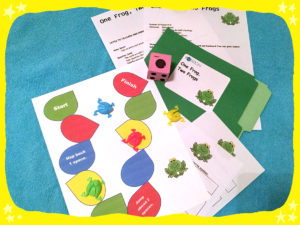
I strongly believe that you can make any math concept fun if you’ll just take some problems, add a little competition, a little challenge, an obstacle or two, and maybe a game board. In fact, I practice this belief by creating fun math games on a regular basis.
After a team of teachers asked for help teaching a difficult math concept, I looked for a new game board to go with the activity I had just created. I searched for “Free Game Boards” and I got thousands of hits in just a few seconds. However, when I followed the links, I discovered that the game boards weren’t really free.
You’re kidding? No free math game boards???
Well, guess what? I decided to create some and I’m giving them away for free! Plus, they aren’t linked to anything that costs money. They aren’t copyrighted, so make as many copies as you want!
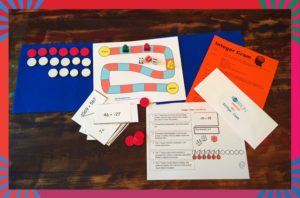
Here are the FREE math game boards:
Generic Game Board created by Glenna Tabor Resources
Generic Game Board, 2, created by Glenna Tabor Resources
Bingo Card Template created by Glenna Tabor Resources
Lily Pad Game Board created by Glenna Tabor Resources
Colorful Two Page Game Board created by Glenna Tabor Resources
Want versions of these math game boards that you can easily modify???
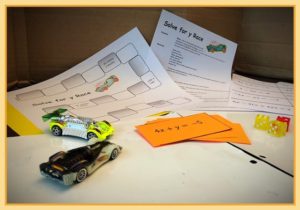
Generic Game Board created by Glenna Tabor Resources
Generic Game Board, 2, created by Glenna Tabor Resources
Bingo Card Template created by Glenna Tabor Resources
Lily Pad Game Board created by Glenna Tabor Resources
Colorful Two Page Game Board created by Glenna Tabor Resources
Please do just one thing for me…
…use these free math game boards to help you AND your students learn math while having fun at the same time!
Need support for using games and fun in math? Here are links to some good articles and research on the topic.
4 Reasons to Promote Math Success through Games
3 Reasons to Learn Unit Rate
What is a unit rate and why should a sixth grader care about this concept?
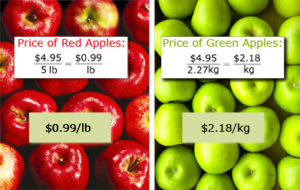
First, let’s define unit rate. A rate is a ratio that compares quantities in different units. Rates are commonly found in everyday life. The prices in grocery stores and department stores are rates. Rates are also used in pricing gasoline, tickets to a movie or sporting event, in paying hourly wages and monthly fees.
Here are a couple of examples of real-world unit rates.
Verizon charges $76.00 for 500 minutes. How much does each minute cost you?
A Mom’s Day Out Program has offered you $72 to direct the sports activities for small groups of children. They want you to work 8 hours. How much will you make per hour?
Now that you know a little bit more about unit rate, let’s explore the next part of the first question.
WHY SHOULD A SIXTH GRADER CARE ABOUT LEARNING UNIT RATE?
A student’s sixth grade math teacher might say, “You should care about unit rate because there’s going to be at least two questions on this concept on the state test this year and you’ll miss the question if you don’t pay attention and care.
WHAT???
THIS IS WHY A SIXTH GRADE SHOULD CARE ABOUT UNIT RATE!
If students don’t know how to find the unit rate, then they will not be able to determine the best deals. In fact, stores count on the fact that most consumers DO NOT know how to find unit rate and will just take the first deal they see. In grocery stores, the items that give the store the greatest profit are placed at eye level. The more cost per unit items are the first ones seen. They are the easiest to grab, but not the best price per unit!
Reason 1 for Learning Unit Rate: You will get the best price for wireless minutes.
Verizon charges $76.00 for 500 minutes. Sprint charges $54.00 for 450 minutes. Which is the best deal?
Reason 2 for Learning Unit Rate: You will get paid more money for doing the same work.
A Mom’s Day Out Program has offered you $72 to direct the sports activities for small groups of children. They want you to work 8 hours. A Home School Group wants you to direct sports activities for 6 hours and they are going to pay you $57. Which job will pay you more money?
Reason 3 for Learning Unit Rate: You just might buy the more affordable vehicle.
A Mustang gets 300 miles on 20 gallons of gas and a Camry gets 495 miles on 15 gallons of gas. Which vehicle is the better deal?
Okay, maybe Reason 3 won’t work for those who love Mustangs and don’t care about the cost. At least the driver will know how many hours they will have to direct sports activities to buy a tank of gas!
Want a FREE UNIT RATE GAME to practice simple unit rates with your students?
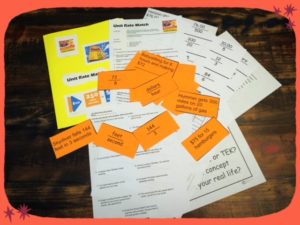
Download Unit Rate Match, 6.4D. You can use this game in your guided math small group or in a Tabor Rotation Math Station. The game has everything you need for a rigorous and relevant math station activity for unit rate: directions with the standard, 45 cards to match, a recording sheet, an answer key, and a exit ticket/passport linking the activity to the state test.
Enjoy this game with your students as they master the concept of unit rate AND have fun at the same time!
Math Vocabulary Game for 5th Grade Geometry
|
|
||
|
6 Easy Steps to Algebra Math Stations
Are you an Algebra teacher who is wanting to begin using Algebra math stations, small groups, and guided instruction with your classes?
If you are, then I’m already impressed and the students you have this year will be, too! Here are a few basic tips for implementing guided math instruction and Algebra math stations in a secondary classroom:
1. To begin Algebra Math Stations, study your next unit of instruction and give your students a pre-assessment of these concepts. Based on the pre-assessment results and other data, identify the most difficult concepts/priority standards of the unit. List the reasons why they are challenging for the students. These are the concepts you will emphasize in teacher-guided small groups and in your Algebra Math Stations.
2. Look at your scope and sequence. How many blocks or days of instruction do you have to teach the unit? How much time is needed for building the basics of the unit? Plot this into a skeleton long-range planning guide for the unit. This Sample Tabor Rotation, Block Schedule for Algebra I is for the unit on relationship
s between quantities and expressions.
In the Tabor Rotation Framework this Phase is called Phase 1: Setting the stage. In a secondary class, Phase 1 may be 1-6 blocks long depending on the level of difficulty of the concepts. However, teacher-guided small groups will occur during this time to provide the best venue for students learning and mastering concepts.
3. Plan for specifically for the Algebra Math Stations. This is Phase 2 of the Tabor Rotation Framework–Varying the Modalities in which students learn. What concepts really need to have manipulatives and a concrete experience for students to truly understand the concept? An activity for this concept will go in the Manipulatives Station. An example of this is Poly Pull, MCC9-12.A.APR.1.
What concepts could be practiced and mastered by playing a game? Algebra Bingo, MCC9-12.A.SSE.1a is wonderful game to play when beginning the Algebra unit on expressions.
What concept would be best taught by you to approximately 1/4 of the class at a time? This is the content for the Teacher Time Station when you guide students in learning that most difficult concept. The use of building blocks are great manipulatives to use for Teacher Time, Interpret Expressions, MCC.A.SSE.1.
Are there any concepts that the students need to review? These would go into the Technology/Application Station. An application activity such as Operationally Speaking, MCC9-12.A.SSE.1 is a great way for students to practice the language of operations they will encounter in word problems.
3. Identify any other unit concepts that would be better taught to a small group instead of the whole group. Plan for teacher-guided small groups to occur during a block of instruction. Schedule a teacher-guided session with all levels of students. The ones who have shown mastery of the concept will be met with for a shorter amount of time and their knowledge refined and extended. The approaching-level students will have 5-10 minutes of instruction depending on their needs and their attention spans.
4. Create choice boards for the rest of the class to use while you are teaching guided groups. My blog, What is the Rest of the Class Doing? is a wonderful source for creating these differentiated and engaging tools. There are attachments, links, and lots of resources.
5. Obtain basic games that can be placed in Algebra Math Stations and used in choice boards. The 24 Game comes in the Algebra, Integers, and Variable versions to challenge your Algebra students. I also use the 24 Game single and double digit to provide practice in basic facts.
Albert’s Insomnia is another tool for composition of numbers and practice of basic facts.
I would also make sure I had the board game Equate in my classroom. It is played like Scrabble and engages the players in the creation of equations and expressions.
6. As you begin, think about why your are doing this and what your ultimate goal is for your students. Create some type of assessment tool to check for understanding and to provide for individual accountability. Passports are an excellent way to document student understanding. LEGO Logic Passport is a great example of this type of tool.

You can engage students in Algebra Math Stations by simply letting them illustrate problems with LEGO people. They LOVE it!!!
I hope this list provides you with a healthy beginning on your journey. By implementing teacher-guided instruction in your Algebra classroom, you are giving students more of the most valuable asset they can ever have–YOU!
I first published this blog post in 2015. The website is updated and…
…there is a LOT MORE for Algebra Math Stations in FREE MATH MATERIALS! Check it out and download for FREE!






